(The Library: Article)
Castles and the architecture of fortifications have always fascinated me. I have spent many hours in my youth drawing and thinking about walls and fortresses and towers. This desire to design the perfect fortress has already occupied many minds over the millenniums of human existence since the stone age.
Castles obviously come in many forms and shapes and their variety is both historical and imaginative. Some of those conceptualised fortifications were built and later evolved into castles. Other fortresses were built on top of previous ones. In all cases, Castles offer splendid vistas given their peculiar emplacements, often chosen for very specific defensive reasons. Many examples are presented below.
I have attempted to retrieve a book that I read as a kid, which illustrated the steps in the construction of a castle, in black and white, detailed designs. I have not been able to find it. Should I manage to find it in the future, I will come back and update this article. But for now, my article will focus on the many parts of medieval castles.
I should also mention that as a kid, probably when I was 7 years old, I decided to build a castle next to the condominium where I lived. I "borrowed" a few tools from my father in law and headed in the nearby woods. The nearby woods were probably 20 meters squared so there was not much space for a castle but when you are small, everything you intend on building is proportional to your size. I finally forgot the tools in the woods and was scolded for it and told to ask permission next time.

I wanted to do step one from the book my mother had borrowed for me from the library. The book that illustrated castle construction. Since the first step was the laying out of the foundation. There were some wood, some stones and some tools made of iron, probably, I did not know at the time. I could find some wood and some stones and so I went out another day in a spot behind the little wood. There I believed would be a better emplacement for the castle. Well, that castle never came into being but I still remember those days vividly.
Examples of castles and fortresses are omnipresent where mankind has lived. Multiple older instances must have been erased by the elements and buried by time. The ruins of Machu Pichu are a good example of this erosion by time on the stones. The fortified cities of Ur and Uruq are now but shadows of their former glories. Others in the middle East and in Asia are sometimes forgotten but reveal the wonders of human architecture.
Yet other castles in Europe retain their glory of old and truly represent wonders of architecture for their respective periods. The modern day Istanbul, home of the Hagia Sofia, in Turkey, was for a long time in history a fortified city with tall walls to protect it from invaders. It's location, on a peninsula, improved its strategic value, but also provided a natural defence against invaders. Ultimately, it took a new technological era, that of canon powder, to turn castles from fortifications, to historical sites.
Imagination
Castles have been depicted in many creations and I wanted to take a look at some of those. How to build castles? Where to build them? How big, how strong should it be?
Obviously, the amount of manpower, the availability of resources and the means to carry them also played important roles on the amount of layers a castle could have. Those layers form the basis of layered defence, which aims to weaken the opponents progressively as they penetrate deeper into the castle. The video below illustrates the progression of defensive structures on castles through time.

Parts of a Castle
Analysing the parts of late medieval castles is akin to studying their history and the technological developments that improved those castles and fortresses over the years.
I say this because other authors have mentioned it and because it is obvious by looking at their age and their technological levels. There is a clear progress in the building techniques and more parts are added with the passage of time. Some castles have even been built on top or within the fortifications of previous castles or forts, such the Roman forts build in England.
However, part of my interest deals with the construction of castles and with those famous levels of sophistication in their defensive structures. Let's look at that evolution to see what parts made their apparition in what order.
The Keep
The Keep is the central structure, the tallest, very often, and the last structure to fall in case of a siege. This is obviously where the lords and their family lived and where provisions were kept. The presence of guest amenities as well as as a chapel are also regular parts of the keep. The cellars were most often used to store food (provisions) and not as prisons the way it is often alluded to in fiction.
Inner Wall
The Inner Wall surrounds the keep and offers the last line of defensive structures before and attacker can reach the keep. It's walls featured various other components such as towers, bastions, a gatehouse and inner corridors perforated by arrow slits also called loopholes.
Outer Wall
The Outer Wall surrounds the Inner Wall and offers the first line of defence and the one with the farthest reach, except for the possible bailey.
Both the inner and outer wall eventually were designed with crenellations, providing them with a more effective retaliation factor. Simply put, the archers or crossbowman on top of the wall could now fire with good visibility and then take cover behind the wall.
Hoardings and Brattice Work
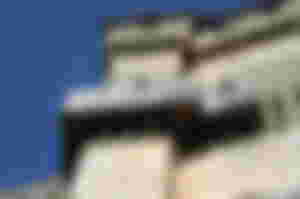
The hoardings or brattice work, represented an upgrade to walls. They were wood constructions that were built on top of the stone walls and which allows soldiers to drop hot oil or to shoot down the enemy attempting to climb the walls. Those technological improvements would later evolve into machicolations.
The Towers
Built either in a circular fashion or in a square fashion, towers offers reinforced positions at the angles in the walls. Those angles would be weak otherwise so they get reinforced by those enormous structures. Their walls have small openings which are called loopholes or arrow slits and which give a wide angle of attack to the archer or crossbowman behind it while providing excellent cover at the same time.
For obvious reasons, the top of the towers also evolved with crenellations and machicolations with time. The Tower that protrude more than others is called a Bastion. Their intent was to break the enemy army and to offer an even better coverage over the advancing forces. They were sturdy, peripheral mini-fortresses, linked with the outer wall.
The Gatehouse
An interesting structure as it represents the only official entrance to the interior of the castle. Gatehouses are present on both the inner and outer walls and they are often misaligned on purpose, so as to make attacks less direct.
Some gatehouses and entrances to fortresses are designed so as to forcibly divide the attacking force in two or more groups, which are then easier to kill, given their divided position.
But the more typical gatehouses did not intend to divide enemy however multiple techniques were developed to improve their efficiency. Advances were such as having a double portcullis, allowing to trap some enemies in between both closed iron gates. Also, the control of those iron gates could be heavily defended with multiple layers of difficult to take positions within the gatehouse.
The Moat
When the outer wall is surrounded by a ravine which gets filled with water, then the castle has a moat. This offers even more defence and forces attacking troops to be slowed in their advance, to drown after being injured and to be generally more vulnerable due to this additional step. On top of this, the moat could provide a supply of fresh water if built next to a river and it could act as a source of fish for the castle.
To reach the gatehouse from the other side of the moat required a drawbridge. The drawbridge would represent yet another impediment in the progress of any would be attacker. Yet, it would not have been desirable to have attackers install their own fortification right on the other side of the moat facing the gatehouse as with time, they would damage the gatehouse and possibly could then run over the debris into the first courtyard. So castle builders added a bailey on the other side of the moat.
The Bailey and Barbican
As a smaller and more isolated copy of the gatehouse, the bailey provided a function similar to that of the bastion, however, it did that while being separated from the castle. Also, of course, it included its own set of portcullis. Those could once again be doubled and the final drawbridge leading to the gatehouse could be doubled with one section extending from the bailey while the other half extended from the gatehouse. The word barbacane, in French, became barbican, in English and describes a similar feature as the bailey. However, later, the barbican became more sophisticated and occupied by itself the previous function of the bailey. Image source here.
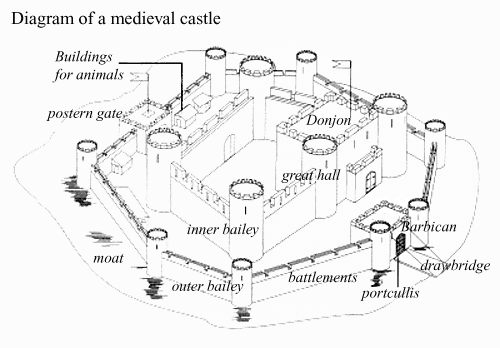
As such, there was no crossing the moat without controlling both the bailey and the gatehouse. Also, the usual crenellations, arrow slits and machicolations could be present to project power as far away as possible, while remaining close to the safety of the castle.

Real Life Historical Castles
Many examples of wonderful castles adorn our world and we should be proud of those accomplishments, even if they were built by forced labour and with the funds of rich Lords that aimed to keep their riches safe, and their peasants and vassals safe at the same time. First, here are my sponsors, those who fund the castle:
With regards to the list below, please note that I present them in chronological order, so that a feel for the architecture can be established by looking at their evolution. Unfortunately, things are not simple; Some castles were destroyed and rebuilt, while others evolved through time and with different owners. The economic capacity of the owners (their finances) and the need to protect were different factors influencing how big and how costly the improvements were. Some of those castles were originally established around a single tower or a small Roman fort. Some of them were then expanded for over a millennium.
Pevensey Castle, England (240 AD)
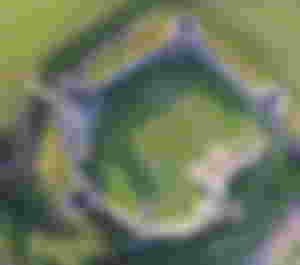
This top down image of Pevensey Castle shows multiple interesting features. First, we can see the thickness of the walls. We don't get to see that very often since most castles are photographed from the front or from a point of view vantage point.
Next, it is remarkable that the towers outside the castle (in the walls) cover the angles of approach quite well. If you imagine tangential lines emanating from the towers (to simulate arrows flying away), you can see how the towers manage to cover nearly all the surroundings and also the areas closer to the walls. Image source.
Nakhal Fort in Nakhal, Oman (6th century and before - 19th century)
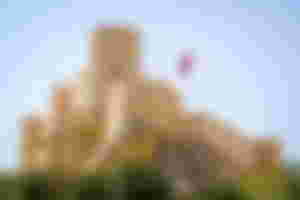
One particularity of this fort is that it was built around a rock outcropping, which is visible on the image above. You can clearly see the similar colours. Also, the architectural style is in line with the Sultanate of Oman. The Gateway and towers were built much later, in 1834. Also, in 1990, the castle was renovated and today, it houses a museum and a goat market.
Bardi Castle, Italy (898 AD)
A majestic fortress, quite impressive given it's location, it was built over the course of several centuries (1).
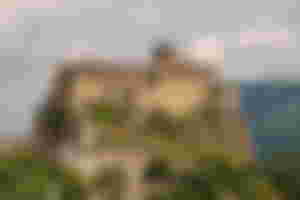
Many of the elements discussed above are already present on this fortress. The machicolations and crenellations are visible atop of the wall and we also see the tower on the left guarding the otherwise weak corner of the building.
The name "Bardi" is attributed to the name of the last elephant ("Bardus" or "Barrio") of Hannibal, a conqueror who nearly conquered Rome by crossing the Alps.
Schwerin Castle in Schwerin, Germany (942 - 1847)

It is one of the earliest but doesn't have the looks of it. It looks much more Gothic and renaissance than medieval. The reason, obviously, as for many others, is that it started as a fort and was then built upon again and again. But the first mentions of a fort on this small island dates back to 973 AD (2).
It's location on a small island made it an ideal defensive position as well as making it a picturesque site. It was during the Renaissance (15th to 17th centuries) that the fort became a palace.
There are rumours of a ghost roaming the castle, the Ghost of Petermännchen (little Peterman). Stories about castles illustrate the story of mankind itself. With dukes, barons, kings and queens as well as ghosts, improvements and the decay of time. Studying the history of castles gives us a perspective into times and epochs that are long gone but which represent the story of mankind on planet Earth.
Burghausen Castle, Germany (1025)
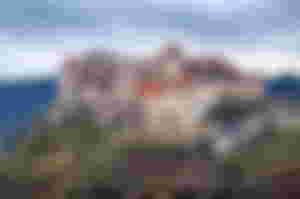
This castle holds the world record for the longest castle complex in the world, standing at 1051m in length (not height). The hill on which it rests was occupied and fortified as early as the bronze age.
Visible in the image above is the Palas complex which today houses the museum and painting from the Bavarian State collection. When looking at modern images of the entire complex, you can "see" the evolution as it expanded to cover more and more grounds centred around the main Palas (Duchal Palace).
Krak des Chevaliers, Syria (1031)

Castles are impressive and never cease to amaze me. Since I wanted to build by own castle at the age of 7, when my imagination knew no bounds, I have dreamt of large walls, tall towers and fortifications allowing to keep what is precious inside and to defend the land. The history of castles are rich with the history of humans.
This particular one, the Krak des Chevaliers (Knights in English) is also called "Hisn al-Akrad" which means "The Fortress of the Kurds" in Arabic.
Once again, like many others, it was built and improved upon over the centuries. The soil around it was drenched in blood many times as men fought for this important strategic centrepiece. Given it's location in Syria, near Tripoli, the Fort has a long history.
Corfe Castle, England (11th to 13th centuries)

Exemplary of the castles that fuel our imagination, the Corfe Castle was built on top of a hill in southern England. From this high vantage point, it commands a gap between two hills, known as the Purbeck hills. Built by William the Conqueror, it was partially made of stone, which contrary to popular belief, was unusual at the time. Most other castles of this time period were built using earth and timber.
The keep was built later, during the 12th century. The south-west gatehouse, providing access from the outer bailey to the west bailey, dates from around the middle of the 13th century (3).
Château de Vitré, France (1066)
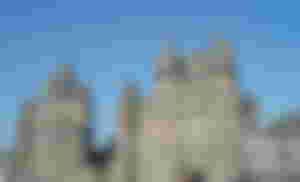
A beautiful castle, very typical of what you might see in modern medieval movies. The machicolations are clearly visible. The gatehouse is impressive and it overlooks the Vilaine River near the city's historic centre.
Like many other castles, its location was well chosen and this one is built on a rocky promontory which dominates the valley of the Vilaine River. Of course, like its brothers and sisters from around the world, this one has seen improvements over the ages.
“How many times have I shuddered before this great, dark castle, where the nostalgic shadow of the baron lives on?” --Theodore Botrel
Dover Castle, England (1066 - 1150s)
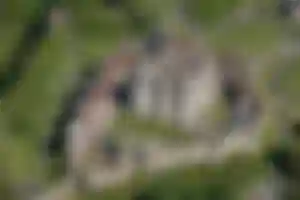
Competing with Windsor Castle (see below) for the title of the largest castle in England (4), Dover castle has a long history that dates back to the Romans and by some accounts, to an even earlier age; That of the Iron Age. The presence of Roman lighthouses is quite remarkable as there are few remaining in the world.
It was only later, between 1179 and 1188 that the inner and outer baileys and the great keep were built for what was at the time, great sums of money.
Like many others, this castle has a long history involving William the Conqueror and multiple Kings and Knights, the Normans and the Saxons.
Windsor Castle in Windsor, England (1070)
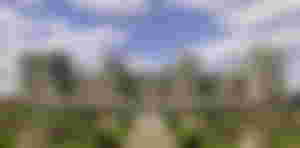
Another English castle which as many others involve William the Conqueror, the Windsor castle combines the features of a fort, a small town and also, obviously, a palace. It also combines features of Georgian, Victorian and Gothic architectures. This castle is where the modern day Royal British family (King Charles III) lives.
The heart of the castle, not visible in the image above, is centred around the motte (an artificial hill in the middle) and a bailey formed around it. The keep, also known as the round tower on top of the motte was extended upwards in the 19th century.
Like nearly all others, this castle went through various expansions and improvements.
Hohenwerfen Castle, Austria (1075)
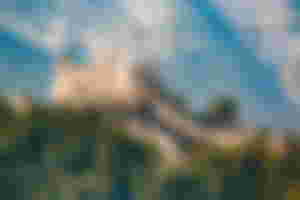
It is impossible not to marvel at the pictoresque views of some castles built in the Alps mountain chain. This particular one, built by the Archbishop Gebhard of Salzburg offers and incredible view by itself and around itself.
Like many others, its history is rich and intertwined with the history of the land, its owners, their finances and the clergy. For many centuries, it served not only as a fortified position, but also as the home of the Prince-Archbishops and as a hunting lodge. It also evolved through time.
Château de Chenonceau in Chenonceaux, France (11th century - 16th century)
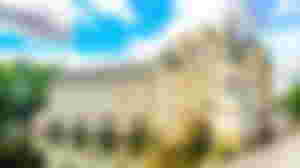
The first mentions of the Château de Chenonceau are dated from the 11th century but it may have been just an old mill at the time. Later, during the early 16th century, it was extended to span the river.
Although it was burnt and rebuilt, the Château has not known warfare as many English have. It's architecture is a mix of Gothic and early Renaissance. Even untouched by war, it still has a rich history, like that of it's many owners.
Obviously, given their ages, and given the relatively shot span of human lives, castles have seen multiple owners come and go. This one is no exception. To add to the richness of the castle's history, here are the names of the owners, in chronological order: The Marques family, Diane de Poitiers, Catherine de' Medici, Louise de Lorraine, Duc de Vendôme, Louise Dupin, Marguerite Pelouze, the Terry family and finally, the Menier family, famous for their cholocates! See this source (5) for more details and additional views.
Vianden Castle in Vianden, Luxembourg (11th - 14th centuries)
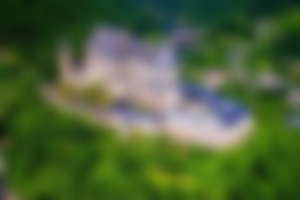
Another great example of mixed architecture, the Vianden castle combines three different architectural styles, each belonging to a different period. When it was built, it was done so in the Romanesque style. Further in time, Gothic improvements were made (such as trimmings) and finally, the mansion, in the Renaissance style, was added during the 17th Century(6).
The castle fell into ruins during the 16th Century after being nearly abandoned but it has been restored in the 19th Century. Again, I repeat myself (see previous castles) but nearly all the castles looked at have evolved throughout the ages. They change owners, they get improvements, they follow the architecture of their time periods, etc. Some have seen wars, some (like the Vianden Castle) have fallen into disrepair but nowadays, most are cherished as historical buildings of great value.
Coming Up Next
The next three articles will continue this exploration of castles and fortifications. Up next is Castles and Fortifications Part II. The articles are ready to be published but I chose to break it down since otherwise, it would have been too long of a read. So with that said, stay tuned, the other articles are coming soon to a Read.cash near you!
Sources:
https://www.amazon.ca/Castle-Fortress-Medieval-Post-Modern-Fortifications-ebook/dp/B07RBFJXRT
https://www.veranda.com/travel/g30083514/beautiful-castles-in-the-world/
https://richiebilling.com/fantasy-writing/a-fantasy-writers-guide-to-castles-and-keeps-part-one
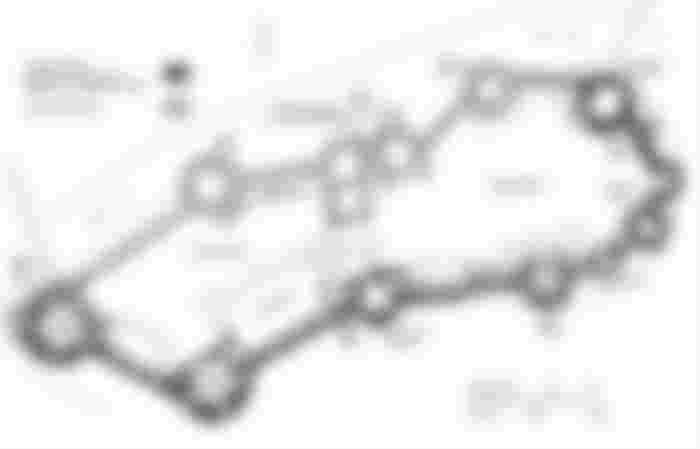

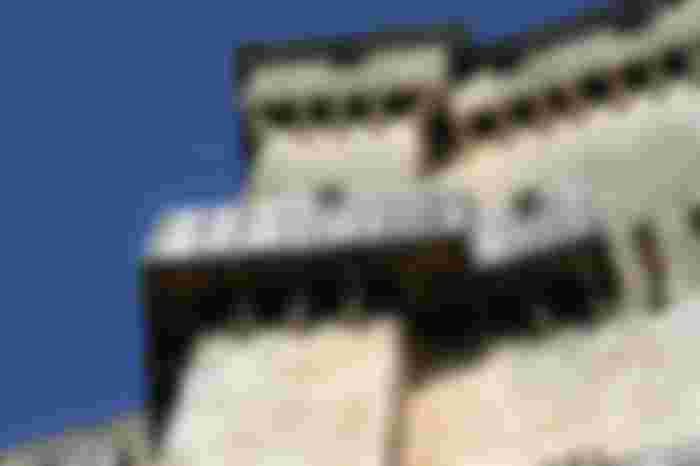
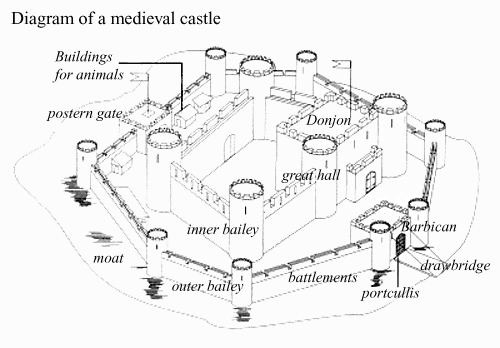
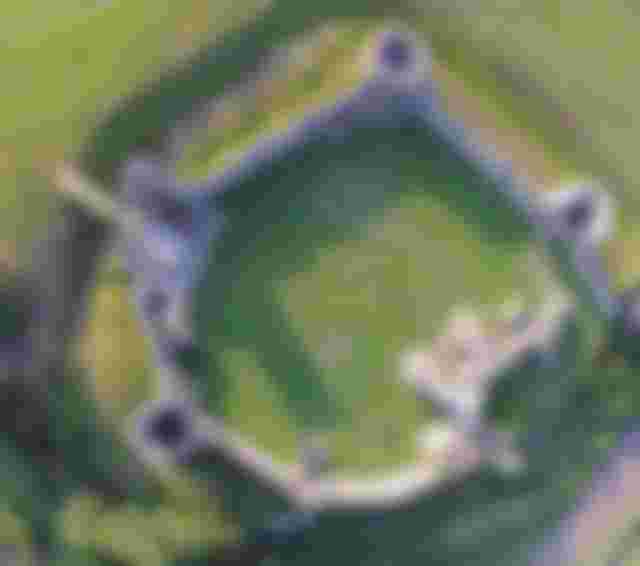
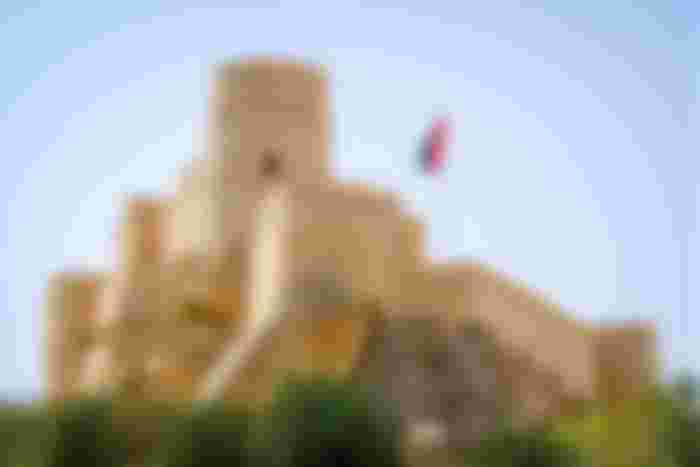
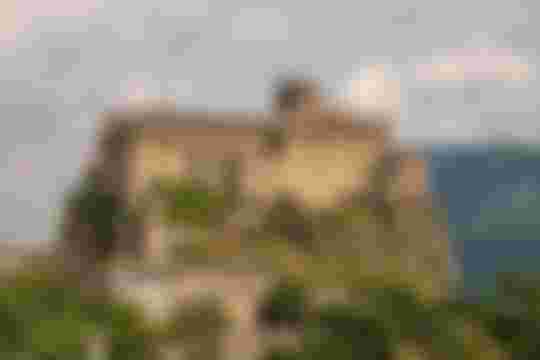
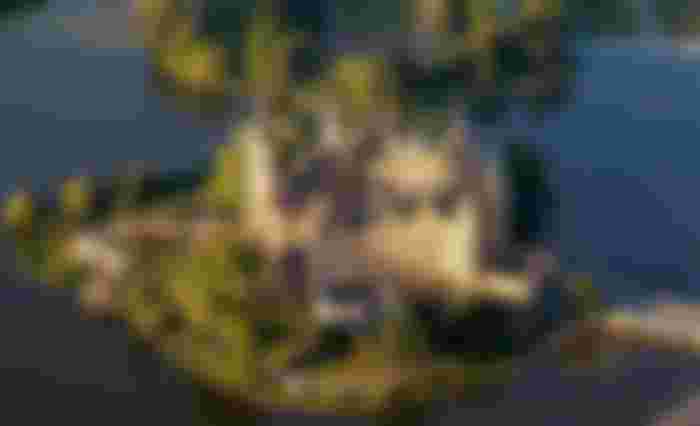
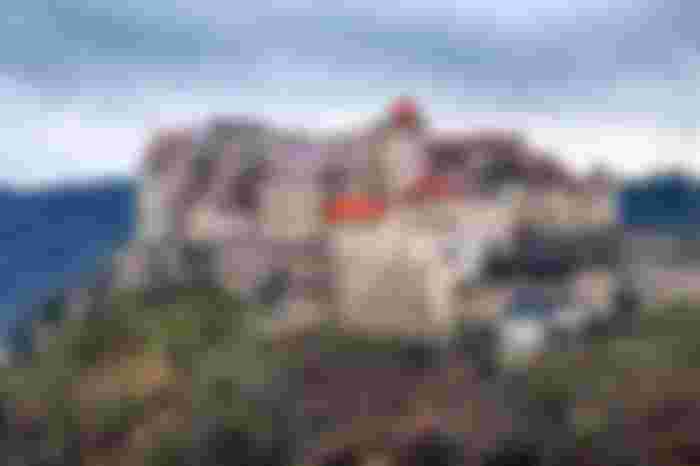
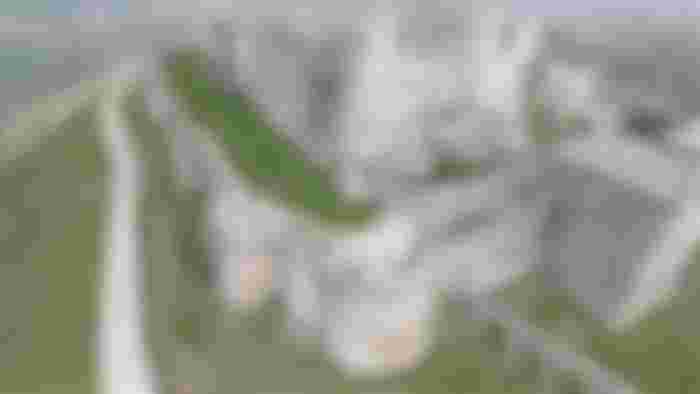

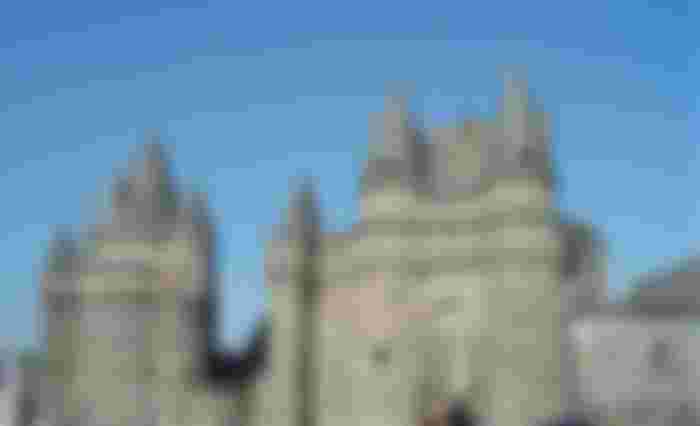

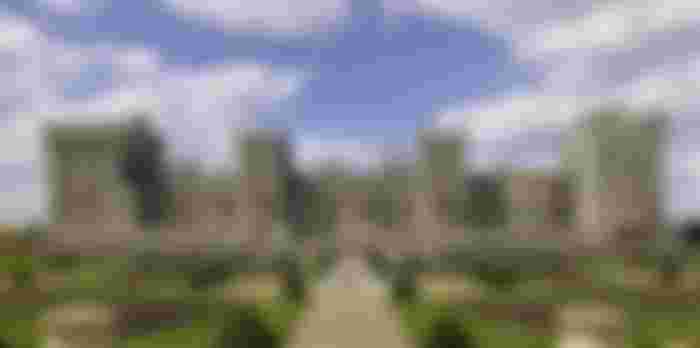
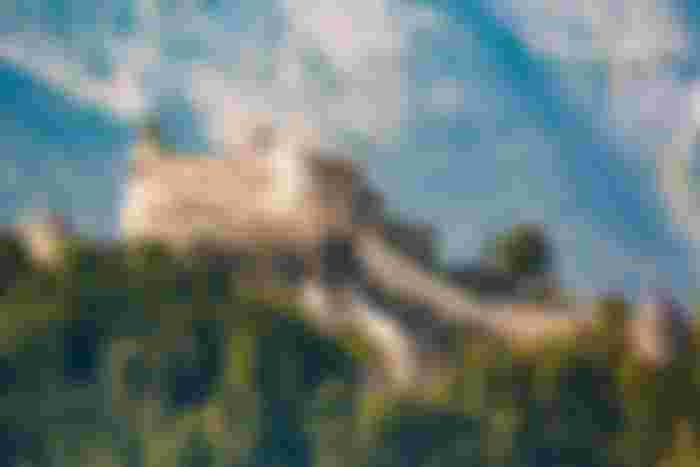
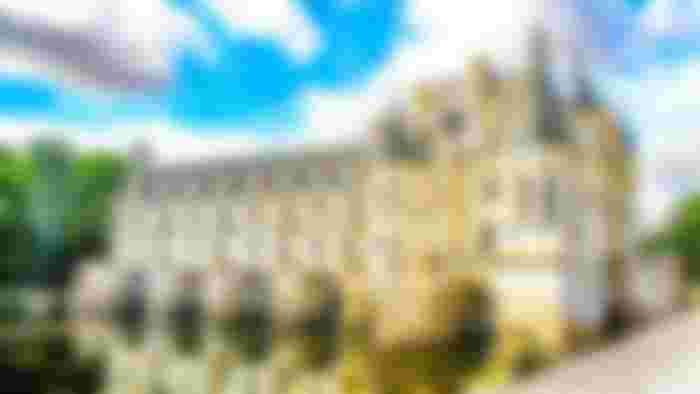
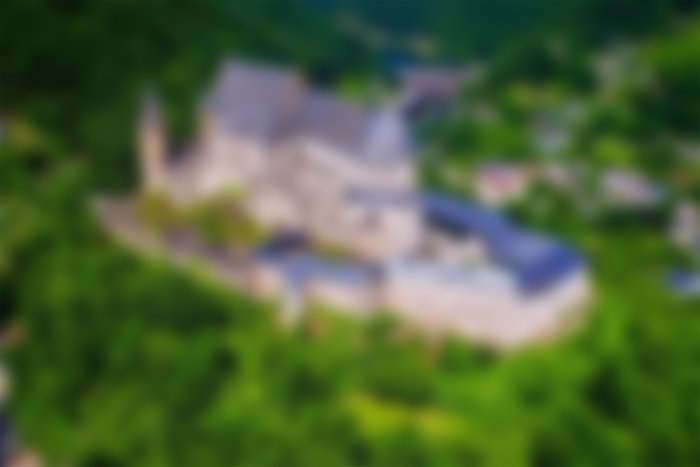
I've had to edit the article because I had missed some. Remember, this is a chronological list so when I find new entries, they need to be inserted! New additions: